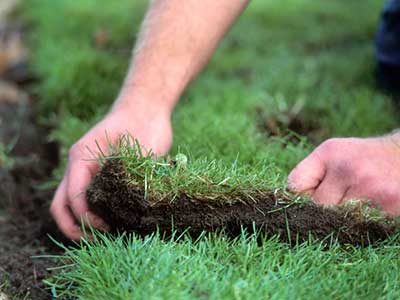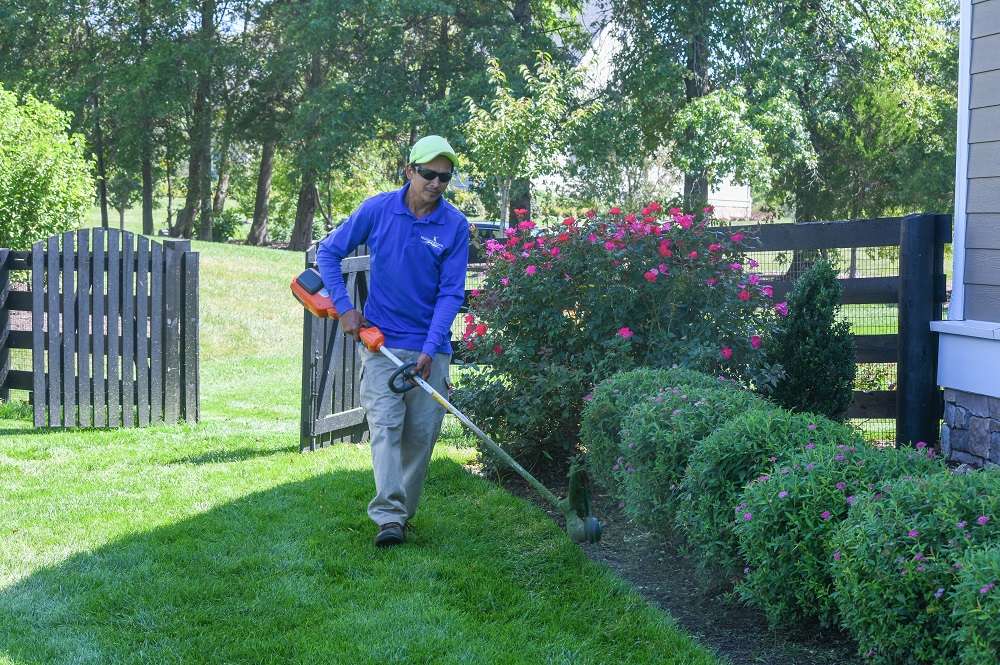Specialist Landscape Design Solutions for Lasting Outside Transformation
Enhancing outdoor rooms with professional landscaping solutions can supply more than simply visual allure; it can grow a sustainable setting that benefits both homeowner and the planet. From picking native plants to carrying out water conservation techniques and using environmentally friendly hardscape options, the opportunities for lasting outdoor improvement are substantial. By understanding the value of upkeep techniques that support sustainability, expert landscaping companies can absolutely make a lasting influence on the outdoor spaces they function on.
Advantages of Sustainable Landscape Design
Sustainable landscape design offers many environmental and economic benefits for both home proprietors and the community. By executing sustainable methods such as xeriscaping, making use of native plants, and reducing water usage, homeowner can substantially lower their ecological impact. These techniques not just preserve water but also promote biodiversity and decrease the requirement for unsafe pesticides and fertilizers.

From a neighborhood perspective, lasting landscape design plays an important role in improving air and water top quality, decreasing urban heat island impacts, and offering habitats for neighborhood wildlife. These benefits add to producing healthier and more lasting environments for everyone to appreciate.
Native Plants Choice and Layout
When preparing a landscape layout, selecting native plants is crucial for enhancing sustainability and ecological community health. Native plants are adjusted to the local climate, dirt problems, and pests, making them low-maintenance and much more resistant to thrive in their natural atmosphere. Including native plants into landscaping makes not only enhances biodiversity however additionally sustains pollinators, useful bugs, and neighborhood wild animals.
Designing with native plants involves cautious factor to consider of variables such as plant size, growth habit, bloom time, and water demands to produce a lasting and aesthetically attractive landscape. By choosing a diverse option of indigenous plants, landscape developers can create well balanced communities that draw in a range of types and add to the general health and wellness of the atmosphere.
Moreover, indigenous plants can help in reducing water usage, reduce the requirement for chemical pesticides and fertilizers, and improve soil quality through their natural procedures. With correct option and layout, indigenous plants can transform outdoor spaces right into growing, lasting landscapes that profit both the community and the environment.
Water Conservation Strategies
Including indigenous plants right into landscaping develops not only enhances biodiversity but also supports pollinators, More Help advantageous insects, and neighborhood wild animals, which highlights the significance of executing water conservation strategies in landscape design practices. Water preservation is critical for lasting outdoor rooms, particularly in regions prone to dry spell or water deficiency. One efficient technique is using drip watering systems, which provide water directly to the plant's origin area, reducing evaporation and drainage. Mulching is one more important practice that aids keep soil moisture, subdues weed growth, and improves dirt health.

Eco-Friendly Hardscape Solutions
The application of ecologically mindful materials in hardscape design is a crucial facet of producing sustainable outdoor rooms. Eco-friendly hardscape remedies incorporate a variety of methods aimed at reducing ecological effect while enhancing the aesthetic appeals and functionality of outdoor locations. Integrating materials such as absorptive pavers, recovered wood, recycled plastics, and natural rock can dramatically lessen the environmental footprint of hardscape installments.
Absorptive pavers, for instance, allow rainwater to permeate right into the ground, decreasing runoff and protecting against water contamination. Reclaimed timber adds a rustic charm to outdoor living rooms while promoting the reuse of existing resources. Recycled plastics can be changed into low-maintenance and sturdy hardscape aspects, offering a lasting alternative to typical materials. All-natural stone sourced from neighborhood quarries decreases transport discharges and blends sympathetically with the surrounding setting.
Maintenance Practices for Sustainability
To promote the ecological honesty of environment-friendly hardscape solutions, carrying out strategic upkeep practices is necessary for ensuring long-term sustainability in exterior landscaping tasks. Normal maintenance not only protects the visual allure of the landscape but likewise adds to its total sustainability by reducing environmental impact.
One secret upkeep technique for sustainability is proper irrigation monitoring. Reliable sprinkling strategies, such as drip irrigation systems or rainwater harvesting, help save water and promote plant health and wellness. In addition, regular examination and change of watering systems can protect against water waste and ensure optimal hydration for plants.
Another important element of sustainable maintenance is the responsible use chemicals and plant foods. Choosing organic fertilizers and employing wikipedia reference incorporated parasite monitoring Home Page methods lessens dangerous chemical overflow into the environment, safeguarding both plant and ecological community equilibrium.
Furthermore, normal cleansing and upkeep of hardscape features like absorptive pavers or rock pathways avoid debris build-up and keep capability while supporting water infiltration and drainage, hence lowering the threat of disintegration and flooding. Landscaping San Marcos. By adhering to these lasting upkeep methods, exterior landscapes can grow sympathetically while minimizing their eco-friendly footprint
Final Thought
In conclusion, sustainable landscape design supplies many benefits through making use of native plants, water preservation strategies, green hardscape remedies, and sustainable upkeep practices. By applying these techniques, outdoor rooms can be changed into environmentally-friendly and visually pleasing areas that sustain biodiversity and minimize environmental influence. Purchasing professional landscaping solutions that prioritize sustainability can cause long-term benefits for both the setting and homeowner.
From picking native plants to executing water preservation strategies and making use of environmentally friendly hardscape options, the opportunities for lasting outdoor change are huge. By applying lasting practices such as xeriscaping, using native plants, and lessening water use, home proprietors can dramatically reduce their ecological impact. Water preservation is crucial for sustainable outdoor spaces, especially in regions prone to drought or water scarcity. By implementing these water conservation strategies, landscape design specialists can develop beautiful, lasting exterior spaces that profit both the area and the environment.
In final thought, sustainable landscaping provides many benefits through the use of native plants, water conservation strategies, eco-friendly hardscape services, and sustainable upkeep techniques.